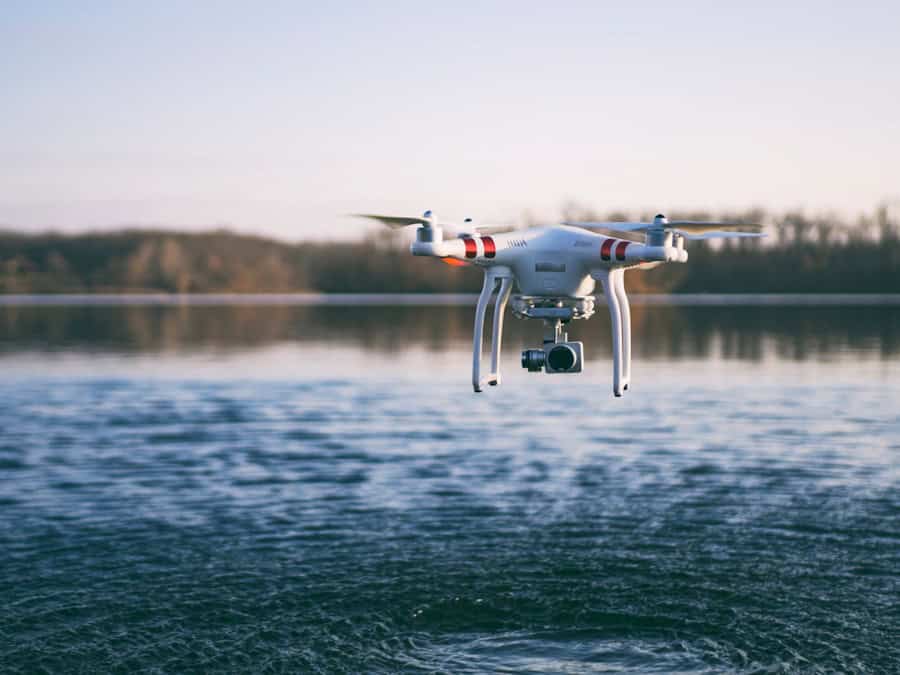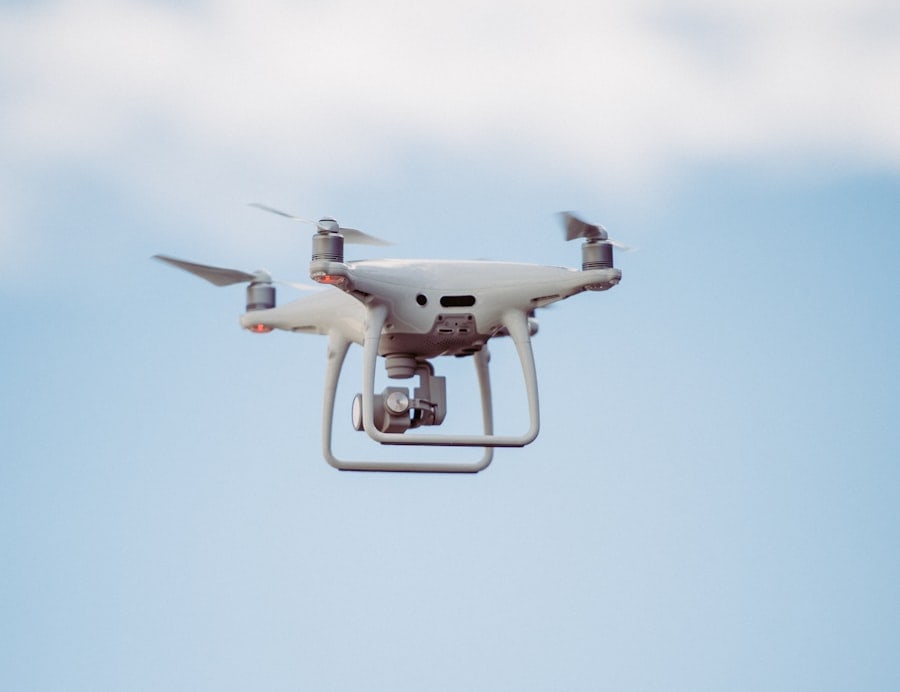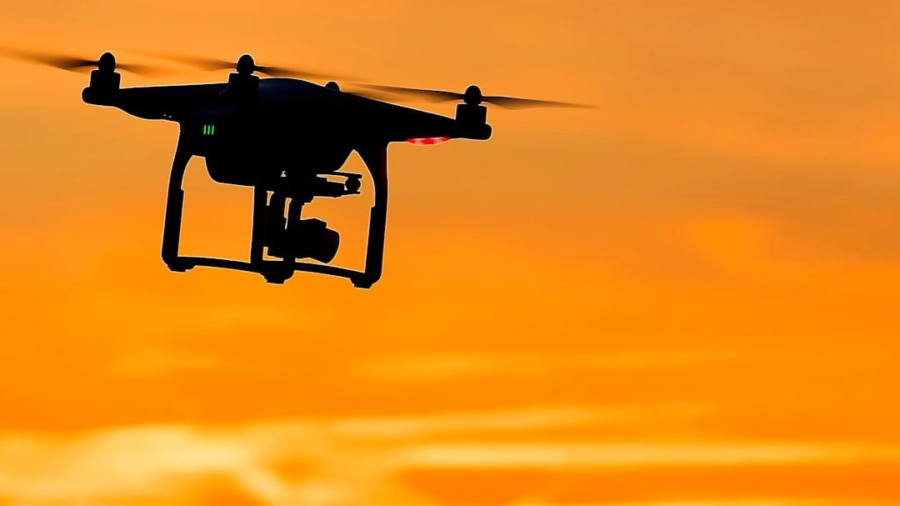The advent of drone technology has revolutionized various fields, and wildlife monitoring is no exception. Drones, or unmanned aerial vehicles (UAVs), have emerged as powerful tools for researchers and conservationists seeking to study animal populations, track migration patterns, and assess habitat conditions. Traditional methods of wildlife monitoring often involve labor-intensive ground surveys, which can be time-consuming and may not provide comprehensive data.
In contrast, drones offer a bird’s-eye view of ecosystems, enabling researchers to gather data more efficiently and effectively. This technological shift not only enhances the accuracy of wildlife studies but also minimizes human disturbance in sensitive habitats. The integration of drones into wildlife monitoring practices has opened new avenues for research and conservation efforts.
With the ability to cover vast areas in a fraction of the time it would take on foot or by vehicle, drones facilitate the collection of high-resolution imagery and data. This capability is particularly beneficial in remote or inaccessible regions where traditional monitoring methods may be impractical. As the technology continues to evolve, the potential applications for drones in wildlife monitoring are expanding, promising to enhance our understanding of biodiversity and inform conservation strategies.
Key Takeaways
- Drones are revolutionizing wildlife monitoring by providing a non-invasive and cost-effective way to gather data on animal populations and behavior.
- Advantages of using drones for wildlife monitoring include their ability to cover large areas, access hard-to-reach locations, and reduce disturbance to wildlife.
- Different types of drones, such as fixed-wing and quadcopters, are used for wildlife monitoring, each with their own advantages and limitations.
- Best practices for using drones in wildlife monitoring include obtaining proper permits, minimizing disturbance to wildlife, and ensuring the safety of both the animals and the drone operator.
- Hobbyists using drones for wildlife monitoring need to be aware of and comply with regulations set by aviation and wildlife authorities to ensure ethical and legal use of drones.
Advantages of Using Drones for Wildlife Monitoring
One of the most significant advantages of using drones for wildlife monitoring is their ability to collect high-resolution aerial imagery. Equipped with advanced cameras and sensors, drones can capture detailed images that reveal critical information about animal behavior, population density, and habitat conditions. For instance, researchers can use thermal imaging cameras mounted on drones to detect heat signatures from animals, allowing them to locate species that are otherwise difficult to spot in dense vegetation or during nighttime hours.
This capability not only improves the accuracy of population estimates but also aids in identifying critical habitats that require protection. Another key benefit of drone technology is its capacity to minimize human impact on wildlife. Traditional monitoring methods often involve close encounters with animals, which can lead to stress and behavioral changes.
Drones can operate at a safe distance, reducing the likelihood of disturbing wildlife while still providing valuable data. This non-invasive approach is particularly important for studying endangered species or sensitive ecosystems where human presence can have detrimental effects. By utilizing drones, researchers can gather essential information without compromising the well-being of the animals they study.
Types of Drones Used for Wildlife Monitoring

Various types of drones are employed in wildlife monitoring, each designed to meet specific research needs and environmental conditions. Fixed-wing drones are particularly effective for covering large areas quickly, making them ideal for surveying expansive landscapes such as national parks or wildlife reserves. These drones can fly at higher altitudes and cover greater distances than their multirotor counterparts, allowing researchers to gather data over vast territories in a single flight.
Their long flight times and ability to carry larger payloads make them suitable for extensive ecological studies. On the other hand, multirotor drones offer greater maneuverability and are better suited for detailed inspections of smaller areas. These drones can hover in place, making them ideal for observing specific animal behaviors or conducting close-range surveys of habitats.
Additionally, advancements in drone technology have led to the development of hybrid models that combine features from both fixed-wing and multirotor designs, further expanding the possibilities for wildlife monitoring.
Best Practices for Using Drones in Wildlife Monitoring
To maximize the effectiveness of drones in wildlife monitoring, researchers must adhere to best practices that ensure data quality and minimize disturbances to wildlife. One essential practice is to conduct thorough pre-flight planning, which includes selecting appropriate flight paths, altitudes, and times of day for monitoring specific species. Understanding animal behavior and seasonal patterns is crucial for determining optimal flight conditions that will yield the most accurate data while minimizing stress on wildlife.
Moreover, researchers should prioritize safety and compliance with local regulations when operating drones. This includes obtaining necessary permits and ensuring that drone flights do not interfere with other air traffic or violate privacy concerns.
Establishing buffer zones around sensitive habitats can help protect animals from potential disturbances caused by drone operations. By following these best practices, researchers can enhance the reliability of their findings while promoting ethical wildlife monitoring.
Regulatory Considerations for Hobbyists Using Drones for Wildlife Monitoring
As drone technology becomes more accessible, hobbyists are increasingly interested in using UAVs for wildlife monitoring. However, it is essential for these individuals to understand the regulatory landscape governing drone operations. In many countries, aviation authorities have established guidelines that dictate where and how drones can be flown.
For instance, in the United States, the Federal Aviation Administration (FAA) requires hobbyists to register their drones and adhere to specific operational rules, such as maintaining visual line-of-sight and avoiding restricted airspace. Hobbyists must also be aware of local laws regarding wildlife protection and conservation. Many regions have regulations that prohibit disturbing nesting birds or other sensitive species during specific times of the year.
Engaging in responsible drone use not only ensures compliance with legal requirements but also contributes to the overall health of ecosystems. By educating themselves about these regulations and practicing ethical drone operation, hobbyists can play a valuable role in wildlife monitoring while minimizing potential negative impacts on animal populations.
Case Studies of Successful Wildlife Monitoring with Drones

Numerous case studies illustrate the successful application of drones in wildlife monitoring across various ecosystems. One notable example is the use of drones in tracking elephant populations in Africa. Researchers employed fixed-wing drones equipped with high-resolution cameras to survey vast savannahs and identify individual elephants based on their unique physical characteristics.
This innovative approach allowed scientists to gather data on population dynamics and migration patterns without disturbing the animals or their habitats. Another compelling case study involves the monitoring of seabird colonies in remote coastal areas. Researchers utilized multirotor drones equipped with thermal imaging cameras to assess nesting success rates among various seabird species.
By flying over colonies during critical breeding periods, scientists were able to collect data on nest occupancy and chick survival rates while minimizing human presence on the ground. The insights gained from this study have informed conservation efforts aimed at protecting vulnerable seabird populations from habitat degradation and climate change.
Tools and Software for Analyzing Wildlife Data Collected by Drones
The collection of data through drone technology is only one part of the equation; analyzing that data effectively is equally crucial for deriving meaningful insights into wildlife populations and ecosystems. Various software tools have been developed specifically for processing aerial imagery captured by drones. Geographic Information System (GIS) software allows researchers to visualize spatial data, enabling them to identify patterns related to animal distribution, habitat use, and environmental changes over time.
Additionally, machine learning algorithms are increasingly being integrated into wildlife monitoring efforts. These algorithms can analyze large datasets generated by drone imagery to automatically identify species, count individuals, and assess habitat conditions with remarkable accuracy. For example, researchers have successfully employed deep learning techniques to train models that recognize specific animal species based on their unique features captured in aerial images.
This automation not only streamlines data analysis but also enhances the scalability of wildlife monitoring projects.
Future Trends in Wildlife Monitoring with Drones
The future of wildlife monitoring with drones is poised for significant advancements as technology continues to evolve. One promising trend is the integration of artificial intelligence (AI) into drone operations. AI-powered drones could autonomously navigate complex environments while collecting data on wildlife populations without direct human intervention.
This capability would allow researchers to conduct long-term monitoring studies with minimal disturbance to animals and their habitats. Moreover, advancements in sensor technology are likely to enhance the capabilities of drones further. The development of lightweight multispectral sensors will enable researchers to assess vegetation health and monitor changes in habitat quality alongside animal populations.
This holistic approach will provide a more comprehensive understanding of ecosystem dynamics and inform targeted conservation strategies. As drone technology becomes more sophisticated and accessible, its application in wildlife monitoring will continue to expand, offering new opportunities for research and conservation efforts worldwide. The combination of aerial surveillance capabilities with advanced data analysis tools promises to transform our understanding of biodiversity and enhance our ability to protect vulnerable species and ecosystems in an ever-changing world.
A related article to How Drones Are Transforming Wildlife Monitoring for Hobbyists is

